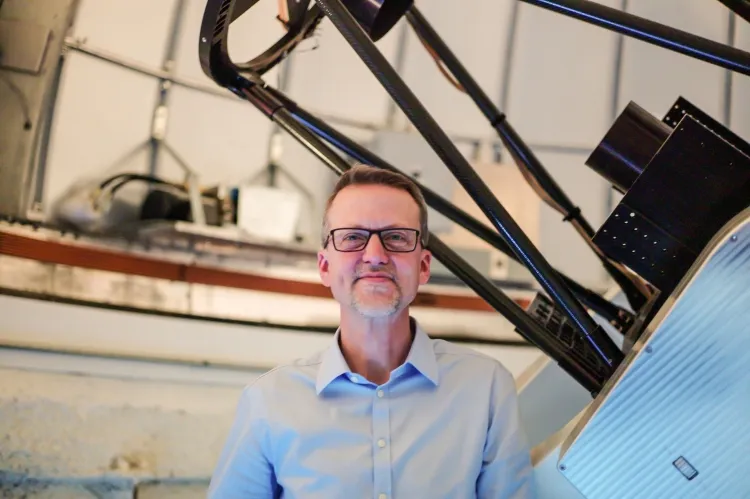Swarthmore Astronomers Prep for Total Solar Eclipse

Professor of Astronomy Eric Jensen in the College's Peter van de Kamp Observatory. Photo by Assistant Professor of Physics Tristan Smith
You’ll have to forgive Professor of Astronomy Eric Jensen if he’s bit a geeked out about the upcoming total solar eclipse - the first to cross the U.S. since 1979. It’s been on his mind for more than 30 years.
“I remember looking at a map of solar eclipse paths when I was at Carleton College in the mid-1980s and thinking, wow, there will be one that goes right across the U.S. in 2017!”
The day Jensen and many of colleagues have been waiting for arrives on Monday when much of the country will be able to witness the shadow of the moon obscure the sun.
According to Jensen, the reason for the overwhelming excitement is not the rarity of a total solar eclipse (one happens somewhere on Earth every year or two), but the fact that so many people in the U.S. live in the path of totality, and thus have a chance to see it. The line of totality will stretch from Oregon to South Carolina, covering parts of 12 states. After Monday, the next solar eclipse over the United States will be in 2024. After that, 2045.
Not wanting to miss this moment, Professor of Astronomy David Cohen is traveling with his family to Salem, Ore., the first major city to witness the total eclipse.
“I'm excited to experience the totality - not just as a professional astronomer, but as a human - to see the sun disappear during the day, to see the silhouette of the moon, to be in the shadow of the moon and to see the stars come out during the day, and to see the solar corona,” he says.
Unfortunately, Swarthmore will not be part of the path of totality for the eclipse. Still, it will have 75 to 80 percent shadow cover, and both Jensen and Cohen believe that members of the community will have many opportunities to witness to this unique phenomenon.
Both recommend viewing the eclipse – which will be begin in Swarthmore at 1:21 p.m. and reach its peak at 2:44 p.m. – with special, NASA-approved eclipse glasses, visiting one of the area museums and libraries hosting watch parties, or simply looking below the leaves of trees.
“The shadows under trees naturally project images of the sun, so look there during the eclipse and you should see a bunch of crescent-shaped images, ” says Jensen.
Asked about the anticipation from the astronomical community, Jensen says this event goes beyond scientific significance.
“We’re excited about it for the same reason everyone else is: it’s a chance to experience a beautiful natural event.”



